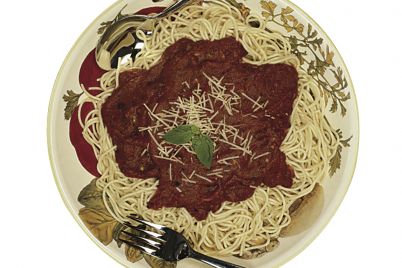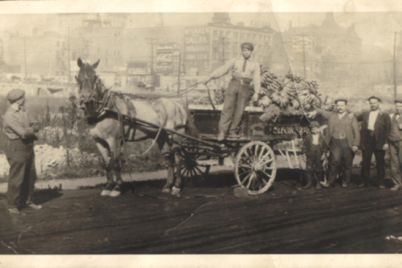“The sense of smell is mediated by the olfactory system, a system that is characterized by exquisite sensitivity and discriminatory power.”
– Linda Buck, 2004 Nobel Prize in Physiology or Medicine
Sensitivity and power… two of the most beautiful qualities that each one of us should aim to have… to experience the perfect balance in life. And they are right within our reach. Right in our nose!
Humans can smell hundreds of compounds: acids, aldehydes, esters, aromatic compounds…And it is proven (I am one example!) that some people enjoy smelling more than tasting. There are hundreds of aromas and scents in nature, therefore we should be more inclined to recognize things with our nose. Unfortunately, our most powerful sense is also the least trained and used.
Start making greater use of your nose and, I promise, you will discover a whole different world! Follow me with a glass of your favourite wine in hand, as we explore the pleasures of using our olfactory system – especially as it pertains to wine.
The olfactory system is that part of our nervous system which allows us to smell. Olfaction comes from the Latin olfacere, to sniff or to smell. Physiologically, it is the ability to detect chemical compounds dissolved in the air. “Odour stimuli” are captured by the olfactory membrane, sent to the olfactory bulb through the nose and into the brain, and transformed into smell perceptions (the ability to detect and differentiate odours).
Smelling in general, and more specifically smelling a glass of wine, is influenced by temperature, the immediate surroundings, our mental and physical state, and the shape of the glass.
Temperature affects how molecules vaporize. Our nose detects more odours in a warm environment and from a warmer source. Meanwhile, the immediate surroundings provide a backdrop to contrast other odours. Our memory plays an important role in linking an odour to a recollection of what the odour represents. This is one of the main functions of our olfactory system. When it comes to wine, the shape of the glass affects how much of the odours in the glass reach our nose. The sense of smell is easily desensitized. It quickly adapts to odours and, as a result, our brain cannot distinguish them anymore.
Wine in a Glass: How Do We Smell?
Direct smelling is achieved in three ways. Firstly, sniff by keeping the glass steady. This will allow you to detect the most volatile aromas. Second, sniff by swirling the glass. This will allow you to detect the less volatile aromas. Thirdly, shake the glass vigourously, with your hand covering the opening. This is useful to confirm a suspected fault or encourage a “shy” aroma to open up.
Indirect smelling occurs during the gustatory analysis, when some vapours escape from the mouth and reach the olfactory bulb, via the retronasal passage.
Wine in a Glass: What Do We Smell?
When we smell wine in a glass we should recognize primary, secondary and tertiary aromas. Primary aromas are typical of the grape variety and are located in the skin. Some grapes are called “aromatic” because their aroma is unmistakable and easily recognized as their signature: Moscato, Gewurztraminer, Sauvignon Blanc.
Secondary aromas come in two stages. Pre-fermentative aromas are formed before fermentation as a result of the manipulation of the grapes and must, and pressing. They can influence the final product negatively if, for example, grapes are brought from the vineyards to the winery in bad condition (if they have started to ferment). Post-fermentative aromas are formed during alcoholic fermentation and malolactic fermentation, and are the result of temperature, length of fermentation, presence of oxygen, filtration techniques and other winemaking practices. Modern selection of yeast plays an important role in the development of aromas.
Tertiary aromas are formed during aging and are influenced by the method of aging (stainless steel versus oak casks, the cask size, or the use of a small barrique), temperature and humidity of the cellar, and the condition of the cork.
We often hear of a wine’s aroma and its bouquet. What is the difference? A wine’s aroma is its distinctive smell, scent or odour. Its bouquet is its complex and layered set of aromas. This term is used more so for red wines, in which we find all three layers of aromas described above.
The reason we hold a wine glass by the stem is to avoid warming up the wine, thereby altering its taste and scent. Also, we don’t want to smudge a nice crystal glass with fingerprints!
Refining Our Vocabulary
Olfactory analysis of wine uses description by comparison. Each smell corresponds (or has a similar odour) to a precise chemical compound of the wine. Acetyl, for example, is reminiscent of hazelnut. Geraniol recalls roses and so on. The following categories of aromas are just a sample from the many that exist.
Fruity: this particular aroma is usually transferred directly from grape to wine (aromatic grapes), often from young wines and from ready-to-drink wines. White wines recall white-fleshed fruit (apricot, pineapple, banana), while red wines bring to mind red berry fruit (cherry, strawberry, blackcurrant, plum).
Floral: aroma of fresh or dried flowers, also called a fine scent or fragrance, recalls delicate flowers (roses, violets for young wines), or more complex flowers (orange blossom, lily, mimosa for more aromatic wines).
Spicy: often found in aged wines (bottle or wood-aged). For example, the aromas of cinnamon, vanilla and tea come straight from the wood.
Herbaceous: fresh cut grass or green vegetables, usually found in Cabernet Franc, Merlot, Sauvignon Blanc. This is also found in wines from cold climate grapes. If well blended with other aromatic compounds, it is synonymous with quality. If it is overwhelming with respect to the other aromatic compounds, it denotes a wine of mediocre quality.
When describing aroma and bouquet, it is also useful to add descriptions like “ample bouquet,” “structured,” “layered,” and “complex” when we find a large variety of aromas. The terms “closed,” “still to develop,” “still to open up” are used when we expect more on the nose, and we are somewhat disappointed.
Major Wine Defects
Corked: Chlorine solutions are commonly used to sterilize barrels and corks. If these solutions come into contact with mould, they may produce a substance called TCA (trichloranisole), which is passed to the wine. The result is a smell of mould, damp cellar and dustiness.
Re-fermentation and dregs: when wine has been in a contact with the lees, which are dirty, for too long or has undergone a second, unwanted fermentation in the bottle.
Oxidation: the wine is undergoing or underwent a chemical reaction with oxygen. This defect can be detected by all three analyses (visual, olfactory, gustatory). Sulphur compounds, SO2: is used in the bottling process to protect wine from oxygen. When used in exceeding quantity, it remains in wines and it smells like a struck match or wet wool. It may subside and individual sensitivity varies substantially.
Hydrogen sulphide, H2S: is an unwanted process of reduction during fermentation that may produce the smell of rotten eggs or burning rubber. It is eliminated by the intervention of the winemaker through the use of copper after fermentation. If left alone, it becomes more pronounced and produces mercaptans, which are compounds that typically smell of garlic, onion and sewage. The process is irreversible at this stage.
Winemaking is a science! It might seem that understanding the composition of this fantastic juice requires a university course in biochemistry. But don’t despair. It is its complexity that makes wine the source of so much pleasure. It challenges our senses and attracts us to its mysteries!
Salute!
Antonio Mauriello received his AIS Sommelier certificate in 1995. His lives in Ottawa with his wife Nina.
First published in Accenti Magazine, Issue 13.




